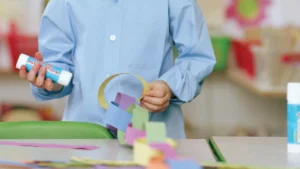How to Motivate (Not Demoralize) a Student with ADHD
In order to do their best in class, children need to be motivated and encouraged. Too many teachers focus on changing the child — instead, it may be more efficient to change the policies and procedures in the classroom. Here’s how.

The key to motivating the child with attention problems is to modify and adjust the learning environment. Many teachers invest significant time and effort in attempting to change the child. Their time might be better spent trying to change the practices and procedures that they are using with the child.
As much as possible, the curriculum should be stimulating and relevant to a child’s life experiences. Research has shown that a curriculum that is irrelevant to the student’s social and economic interests generally results in disruptive behavior, poor academic performance, limited progress, and dropping out. These children live very much in the present. Therefore, long-term goals and rewards (grades and report cards) are often ineffective motivators.
The child with attention deficit disorder (ADHD or ADD) will respond positively to a curriculum that allows him choices and options. He will also be more likely to participate actively in tasks when there is a degree of creativity and novelty (presenting a history review as a Jeopardy! game). In order to maintain the motivation of this child, the teacher must simultaneously consider what is being taught and how it is being taught.
Among the teaching strategies that may foster motivation are:
1. Provide a structured, predictable environment.
2. Give simple single-step instructions.
3. Simultaneously provide verbal and visual input (dictate instructions as you write them on the board).
[Free Poster: What Every Teacher Should Know About ADHD]
4. Clearly outline rules, limits, and expectations. Post them.
5. Allow for an occasional break to let the child relax and reenergize.
6. Legitimize the child’s need for movement and activity by designing classroom activities that allow and encourage movement.
7. Have the child’s attention before giving him a direction or instruction. This can be done by calling his name or using a hand signal. After the instruction has been given, have him repeat it back to you before carrying it out. Many children with ADHD are adept at appearing to understand when they do not.
8. Use a cue or a private signal that you can send to the child if her behavior or attention is beginning to deteriorate.
9. Do not emphasize quality and quantity at the same time. Lengthy, complex assignments are difficult for a child with attention challenges. It is better to assign five math problems and emphasize/expect accuracy than to assign 20 problems that will overwhelm the child and result in 20 inaccurate responses.
10. Provide the child with several (10 to 15) seconds to respond to verbal questions. It may take him that long to process and comprehend the question. Whenever possible, supplement verbal questions with visual input.
11. Avoid attributing judgmental reasons for the child’s inconsistency and impulsivity. Remember that these behaviors occur through no fault or choice of the child’s.
12. Remember that hyperactive behaviors during seat work (drumming fingers, pencil tapping, squirming in seat) are a release for a child’s hyperactivity. Unless the movements are distracting or disruptive to others, ignore them.
13. Provide the child with ADHD opportunities to show divergent, creative, and imaginative thinking and to receive recognition for his originality.
14. Follow difficult activities with more interesting or rewarding activities: “Joseph, when you finish the math worksheet, you can feed the gerbil.”
15. Try alternative methods of assessment, such as oral testing or demonstration testing. Written tests and assessments are difficult for children with attention problems because of their language and organizational weaknesses.
16. Never take good behavior for granted. Praise and reinforce the child for not interrupting, for working patiently, remaining in his seat, and cooperating.
Source from: Updated on October 17, 2023